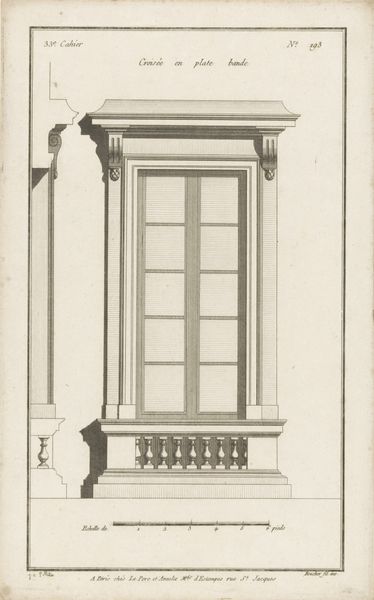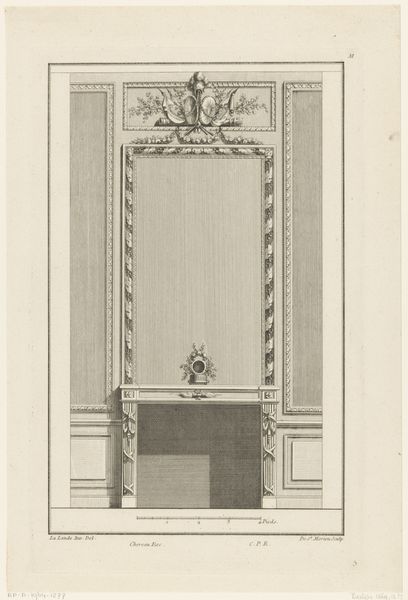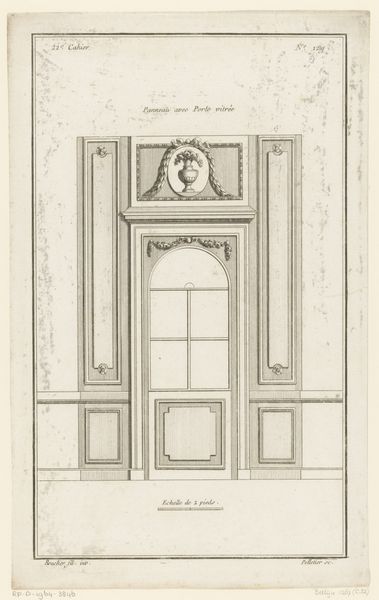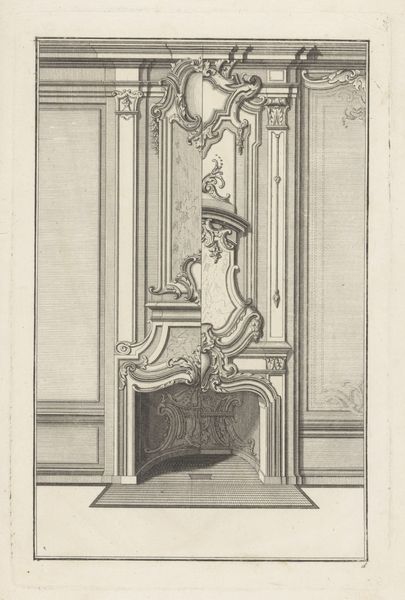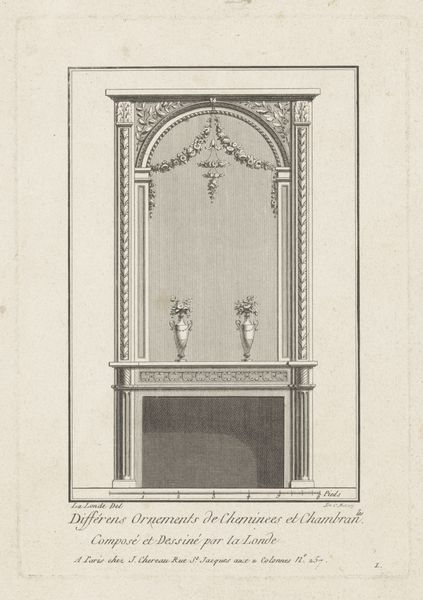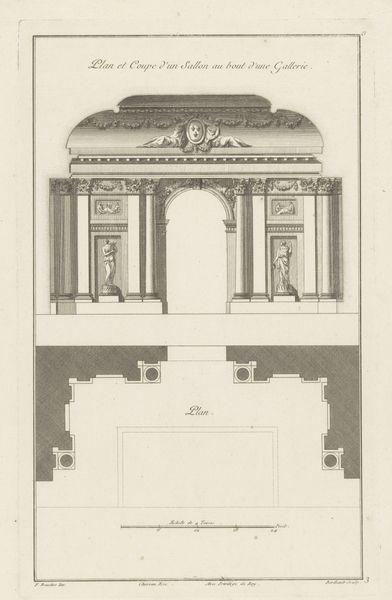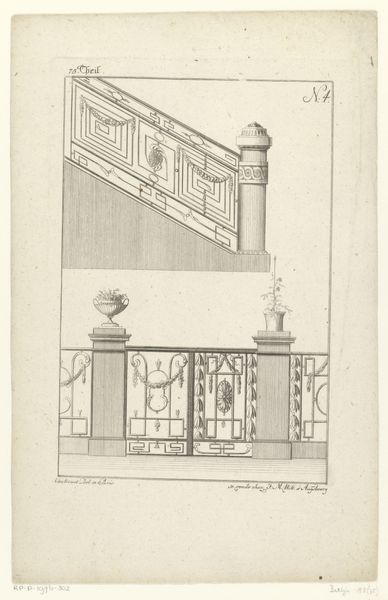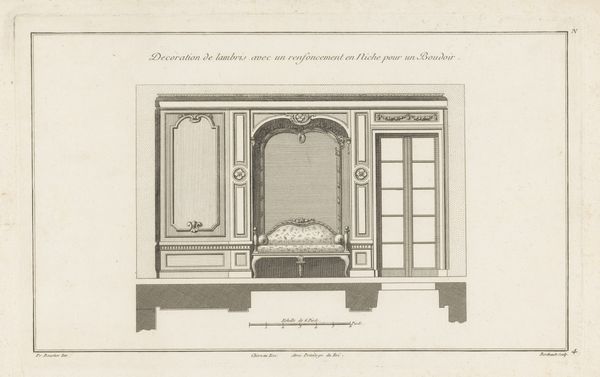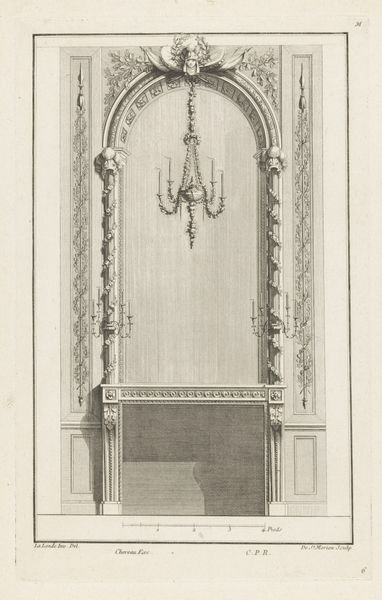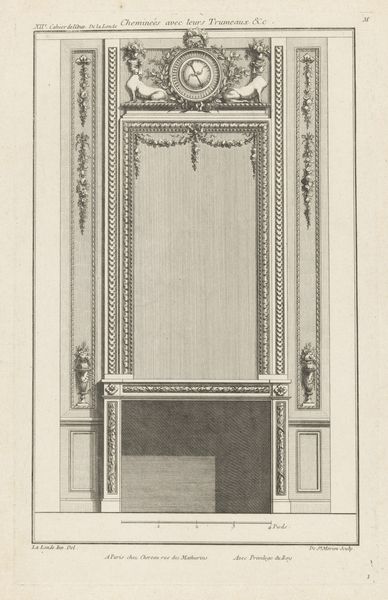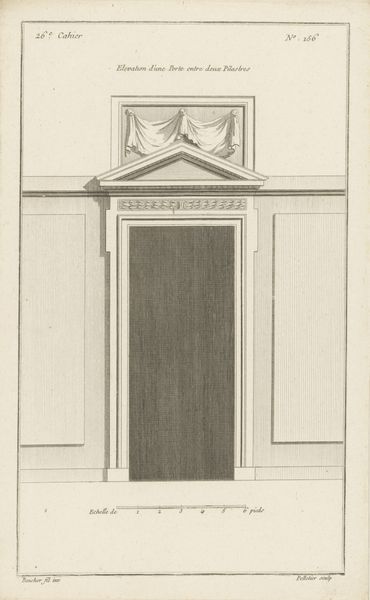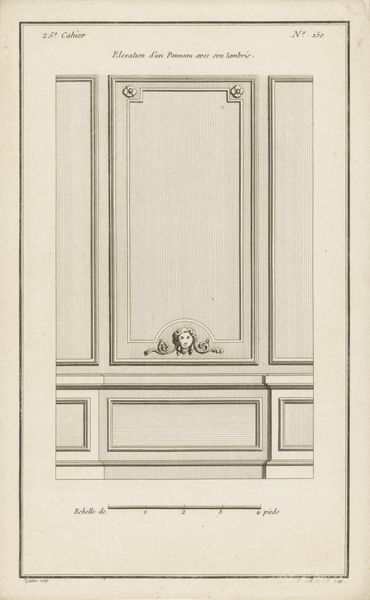
drawing, paper, engraving, architecture
#
drawing
#
neoclacissism
#
paper
#
geometric
#
line
#
engraving
#
architecture
Dimensions: height 363 mm, width 223 mm
Copyright: Rijks Museum: Open Domain
Curator: My first impression is serene emptiness; I mean, even the neoclassical bust seems lonely! What do you make of this composition? Editor: Well, what we have here is Pierre-Gabriel Berthault’s architectural drawing, "Kamer met tafel en vensters", or "Room with table and windows". Created between 1752 and 1794, this engraving on paper embodies neoclassical principles. Curator: Ah, neoclassicism! The reign of clean lines, balance, and a touch of, shall we say, historical longing? I'm getting the definite impression this isn't a place for wild parties! It’s far too precise and orderly. Editor: Indeed. Think of it as a visual manifesto, signaling a return to perceived ideals of antiquity. The symmetry speaks to rationalism, a reaction against the perceived excesses of the Baroque. Look at how space is articulated—functionality is key, but also symbolic power. Curator: The symbolic power of... an empty room? Tell me more. I suppose the clean slate appeal is ever present in architecture and design—maybe the piece even has political motivations? Editor: The architecture certainly isn’t without implicit social commentary. It suggests order, control—think of class structures mirrored in design choices of the time, ideas of containment and boundaries were key to European aristocracy during this era. Consider how this ideal translates into social constructs, reinforcing rigid societal norms. Curator: I see the table almost as a theatrical stage, drawing the viewer into an almost absurd display with only the bust to stand-in as an actor. In a sense, it becomes a meditation on absence, perhaps? Editor: Perhaps. Absence allows for ideological projection; the emptiness of the room allows one to interpret it and perhaps "fill in" those ideological and political blanks in real life. Curator: Very well said, the longer I look the more those political motivations arise from what previously felt only aesthetically intentional. Thanks! Editor: You too; examining design in context, from floor plan to broader social architectures, adds an important layer to interpretation.
Comments
No comments
Be the first to comment and join the conversation on the ultimate creative platform.
